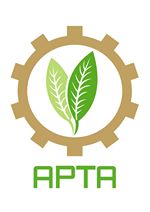LC-MS Based Metabolite Profiling of Ethanolic Extracts from Curcuma domestica Val. varieties Turina-1
Sri Mulyani(1*), Bambang Ahmadi Harsojuwono(2), I Nyoman Semadi Antara(3), I Nengah Kencana Putra(4)
(1) Department of Agroindustrial Technology, Faculty of Agricultural Technology, Udayana University, Indonesia
(2) Department of Agroindustrial Technology, Faculty of Agricultural Technology, Udayana University, Indonesia
(3) Department of Agroindustrial Technology, Faculty of Agricultural Technology, Udayana University, Indonesia
(4) Department of Food Science and Technology, Faculty of Agricultural Technology, Udayana University, Indonesia
(*) Corresponding Author
Abstract
Keywords
Full Text:
PDFReferences
Aggrawal BB, Sundaram C, Malani N, Ichikawa H. 2007. Curcumin: the Indian solid gold. Adv Exp Med Biol, vol 595, 1– 75.
Amiruddin, A. 2016. Indonesian Turmeric in the International Market. Available online https://inipasti.com/kunyit-indonesiadipasar-internasional/(accessed on 23 October 2017).
Bursatriannyo, Cheppy Syukur, and Mushthofa. 2016. Identification of Turmeric Variety Using Expert System, Available online: https://www.researchgate.net/publication/ 320062940_ (accessed on 6 June 2018).
Cai YZ, Sun M, Xing J, Luo Q, Corke H. 2006. Structure-radical scavenging activity relationships of phenolic compounds from traditional Chinese medical plants. Life Sci, vol 78, 2872–2888.
Chen WF, Deng SL, Zhou B, Yang L, Liu ZL Curcumin and its analogues as potent inhibitors of low-density lipoprotein oxidation: H-atom abstraction from the phenolic groups and possible involvement of the 4-hydroxy-3-methoxyphenil groups. Free Radic Biol Méd 2006, 40, 526–535.
Dairam A, Limson JL, Watkins GM, Antunes E, Daya S. 2007. Curcuminoids, curcumin, and desmethoxycurcumin reduce lead induced memory deficits in male wistar rats. J Agric Food Chem, vol 55, 1039– 1044.
Dewi, P. J. N, A. Hartiati. S. Mulyani, 2016. Effect of Harvest Age and Maceration Level on Curcumin Content and Antioxidant Activity of Turmeric Extract (Curcuma Domestica Val.). Vol.4, 105- 115, ISSN: 2503 -488X. Available online: https://ojs.unud.ac.id/index.php/jtip/article /view/25612/16666 (accessed on 12 June 2018).
Haukvik T, Bruzell E, Kristensen S, Tønnesen HH. 2011. A screening for antibacterial phototoxic effects of curcumin derivatives. Studies on curcumin and curcuminoids. XLIII. Pharmazie, vol 66 (1), 69-74.
Herebian D, J-H Choi , A. M.A El-Aty, J-H Shimb and M. Spitellera. 2009. Metabolite analysis in Curcuma domestica using various GC-MS and LC-MS separation and detection techniques Biomed. Chromatogr, 23: 951-965. www.interscience.wiley.com DOI 10.1002/bmc.1207.
International Trade Center (ITC). 2010. Spice Sub-Sector Strategy for Ethiopia. Available online: www.intracen.org/Workarea/DownloadAs set.aspx?id=68824 (accessed on 6 June 2018).
Jayaprakasha GK, Rao LJ, Sakariah KK. 2006. Antioxidant activities of curcumin, demethoxycurcumin and bisdemethoxycurcumin. Food Chem, vol 98, 720–724.
Kanaya, I. A and Firdaus, M. 2014. Competitiveness and Export Demand for Indonesian Biopharmaca Products in Major Destination Countries 2003 – 2012. Journal of Management & Agribusiness Vol 2 (3): 183 – 198.
Khafif A, Schantz SP, Chou TC, Edelstein D, Sacks PG. 1998. Quantification of chemo preventive synergism between epigallocatechin-3-gallate and curcumin in normal, premalignant and malignant human oral epithelial cells. Carcinogenesis, vol 19:419–424.
Leu TH, Maa MC. 2002. The molecular mechanisms for the antitumorigenic effect of curcumin. Curr Med Chem, vol 2, 357– 370.
Mazumder A, Neamati N, Sunder S, Schulz J, Perez H, Aich E, Pommier Y. 1997. Curcumin analogues with altered potencies against HIV-1 integrase as probes for biochemical mechanisms of drug action. J Med Chem, vol 40:3057–3063.
Moos PJ, Edes K, Mullally J, Fitzpatrick J. 2004. Curcumin impairs tumor suppressor p53 function in colon cancer cells. Carcinogenesis, vol 9, 1611–1617
Mukhopadhyay A, Basu N, Ghatak N, Gujzal PK. 1982. Anti-inflammatory and irritant activities of curcumin analogs in rats. Agents Actions, vol 12, 508–515.
Nardo, L, A. Andreoni, M. Masson, T. Haukvik, H. H.Tønnesen. 2011. Studies on Curcumin and Curcuminoids. XXXIX.Photophysical Properties of Bisdemethoxycurcumin. J Fluoresc, vol 21, 627–635. DOI 10.1007/s10895-010- 0750-x .
Rao T, Basu N, Ghatak N, Gujral PK. 1982. Anti-inflammatory activity of curcumin analogues. Indian J Med Res, vol 75, 574– 578.
Salim, Z and Munadi, E. Commodity Information on Medicinal Plants. 2017. Indonesian Ministry of Trade's Agency for Trade Assessment and Development, Available online http://bppp.kemendag.go.id/media_conten t/2017/12/Isi_BRIK_Tanaman_Obat.pdf (accessed on 12 May 2018).
Schaich KM, Fisher C, King R. II: Teas, Spices, and Herbs. 1994. In: Ho CT, Osava T, Huang MT, Gosen RT (eds) Phytochemicals for cancer prevention II, ACS Symp. Ser. 547. American Chemical Society, Washington, 204–221.
Somparn P, Phisalaphong C, Nakornchai S, Unchern S, Morales NP. 2007. Comparative antioxidant activities of curcumin and its demethoxy and hydrogenated derivatives. Biol Pharm Bull, vol 30, 74–78.
Srimal RC and Dhawan BN. 1973. Pharmacology of di-ferulyl methane (curcumin), a non-steroidal antiinflammatory agent. JPharm Pharmacol, vol 25, 447–452.
Sui Z, Salto R, Li J, Craik C, Ortiz de Montellano PR. 1993. Inhibition of the HIV-2 proteases by curcumin and curcumin boron complexes. Bioorg Med Chem, vol 1,415–422.
Tønnesen HH, Karlsen J, Adhikary SR, Pandey R. 1989. Studies on curcumin and curcuminoids. XVII. Variation in the content of curcuminoids in Curcuma Longa L. From Nepal during one season. Z Lebensm-Unters Forsch, vol 189, 116– 118.
Woo J, Kim Y, Choi Y, Kim D, Lee K, Bae JH, Chang DS, Jeong YJ, Lee YH, Park J, Kwon TK. 2003. Molecular mechanisms of curcumin-induced cyclotoxicity: induction of apoptosis through generation of reactive oxygen species, down-regulation of BclXL and IAP, the release of cytochrome c and inhibition of Akt. Carcinogenesis.; vol 24(7):1199-208.
Article Metrics
Refbacks
- There are currently no refbacks.
Copyright (c) 2020 Sri Mulyani, Bambang Ahmadi Harsojuwono, I Nyoman Semadi Antara, I Nengah Kencana Putra

This work is licensed under a Creative Commons Attribution-ShareAlike 4.0 International License.








